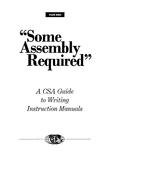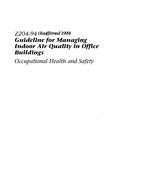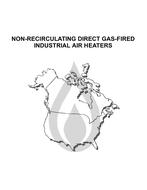Preface
This is the third edition of CSA C411.4, Composite suspension insulators for overhead lines > 75 kV. It supersedes the previous editions, published in 2010 and 1998. Significant changes in this edition include – the addition of a flammability test; – revisions to the critical impulse flashover test; – revisions to the wet power frequency voltage flashover test; and – an updated mechanical load-time test. This Standard has also been updated to reflect current industry practice and to make reference to international standards where applicable. This Standard is one of the CSA C411 series of Standards covering insulators. The other Standards in the series are – CSA C411.1, AC suspension insulators; – CSA C411.5, Dead-end/suspension composite insulators for overhead lines ≤ 75 kV; – CSA C411.6, Line post composite insulators for overhead distribution lines; and – CSA C411.7, Composite insulators for guy wires. This Standard is based on the requirements of IEC 61109:2008, Insulators for overhead lines — Composite suspension and tension insulators for a.c. systems with a nominal voltage greater than 1 000 V — Definitions, test methods and acceptance criteria. In addition, this Standard includes physical, electrical, and mechanical characteristics, and end fitting types and dimensions according to the insulator types in CSA C411.1, in order to provide a complete insulator specification.
Scope
1.1 This Standard applies to suspension and dead-end composite insulators used on ac overhead transmission lines with a nominal voltage greater than 75 kV and a frequency not greater than 100 Hz. 1.2 This Standard specifies a) insulator characteristics (mechanical, electrical, and dimensional) and prescribe the conditions under which these characteristics are to be verified; b) test methods; and c) acceptance criteria. 1.3 In this Standard, “shall” is used to express a requirement, i.e., a provision that the user is obliged to satisfy in order to comply with the Standard; “should” is used to express a recommendation or that which is advised but not required; and “may” is used to express an option or that which is permissible within the limits of the Standard. Notes accompanying clauses do not include requirements or alternative requirements; the purpose of a note accompanying a clause is to separate from the text explanatory or informative material. Notes to tables and figures are considered part of the table or figure and may be written as requirements. Annexes are designated normative (mandatory) or informative (non-mandatory) to define their application.
Product Details
- Edition:
- 3rd
- Published:
- 07/01/2016
- ISBN(s):
- 9781488302596
- Number of Pages:
- 57
- File Size:
- 1 file , 8 MB
- Product Code(s):
- 2424282, 2424282, 2424282


